The last leg to Shotley was a drag, our journey impeded by a huge container ship heading for Felixstowe. Rex considered it prudent to do a U-turn and cross the shipping channel after the leviathan had passed in front of us. A pair of tugs exited the port to greet the ship and attach lines ready to manoeuvre the large vessel into its berth. A Stena RORO vessel caught up with us as we entered the large Felixstowe harbour, but it decided it would be wise to stop while the tugs spun the larger ship around by 180 degrees; Felixstowe prefer to berth ships with their bows facing the sea.
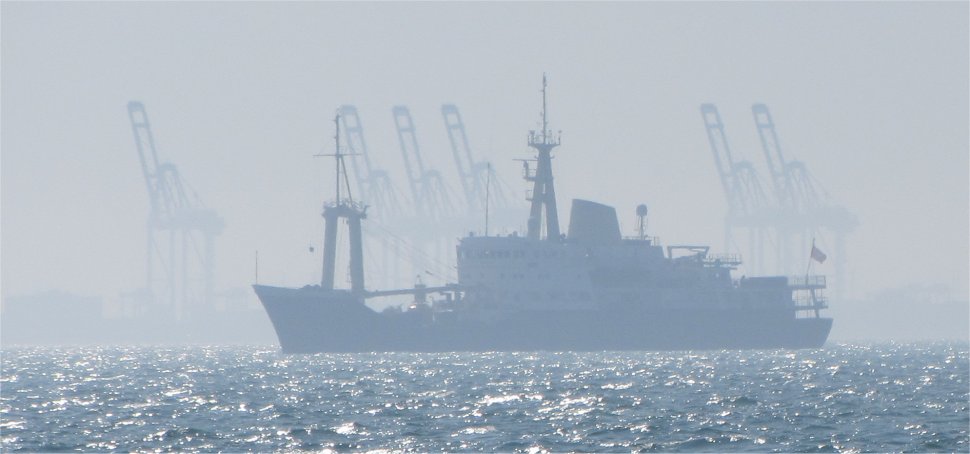
Ghostly Ship Entering the Docks
|
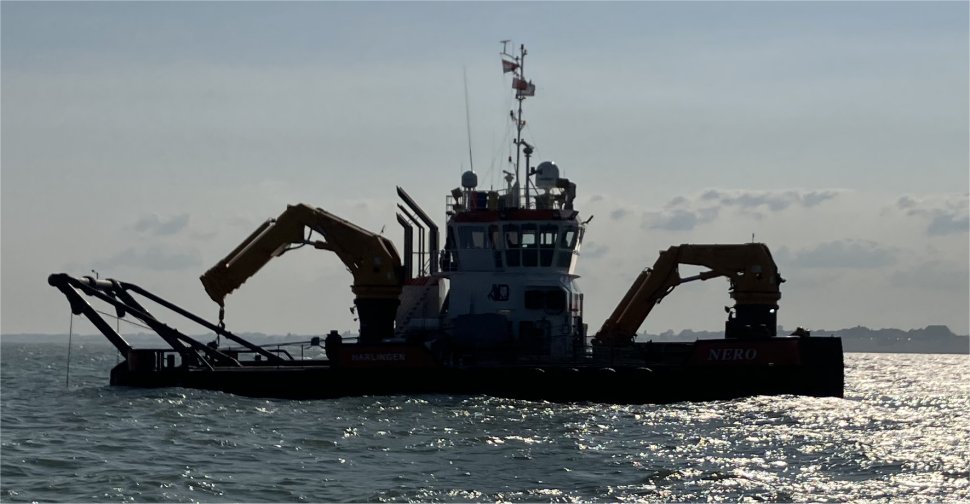
Dutch Vessel at Work in the Docks
|
Shotley marina lock posed no problems to seasoned "Dutch" sailors like us who had experienced a multitude of locks in the Netherlands. Soon we were berthed behind a Dutch yacht on a linear pontoon. The Dutchman who kindly took our lines informed me that they had sailed across to Lowestoft, and were now travelling around the East Anglian coast. Their next port of call would be Heybridge Basin, followed by Ramsgate, Dunkirk and then back to Holland.
I went off to pay the harbour master his dues. I enquired about today's status of the hostelries.
"The Shipwreck is closed, but the Bristol Arms is open until 10pm," he replied.
Like many small places in the UK nowadays, Shotley's hostelries share opening days through the week between them. The good news was we were able to shower and walk down to the pub for a beer and food, a welcome treat after our mammoth 35-hour trip. We arrived at the Bristol Arms which was heaving with folk, most of whom were eating. We had to queue for a while to reach the bar.
"Two pints of beer, please, and can we order food?" asked Rex.
"I can serve you the beer, but sorry, we've closed the kitchen now since the pub quiz is meant to start at 7pm, and we're already an hour behind," replied the young woman who seemed to be on her last legs. The bottom dropped out of our world.
We savoured our beers in a warm evening breeze, and pondered on the merits of Shotley. We had sailed here many times, but the cost of a night's berth plus the hit and miss prospects from the local hostelries was making the venue less appealing. I should point out that the village of Shotley lies about a mile inland from Shotley Gate, which is actually on the tip of the Shotley Peninsula. But what is behind Shotley?
The Shotley Peninsula is a small stretch of land between two great Suffolk rivers, the Orwell and the Stour. Whilst the Peninsula's flat, rural landscape is surrounded by water it opens up to an enormous sky above, a vast stage upon which theatrical sunrises and sunsets play out on a daily basis. At Shotley Point, the two rivers meet before emptying into the grey North Sea.
With a river either side and the sea in front, Shotley Peninsula is a boater's paradise. It was used as the setting for Arthur Ransome's classic children's book, "
We Didn't Mean to Go to Sea," and the charm of Ransome's Shotley has not faded: pretty sailing boats are moored up and down the coast of Shotley Peninsula, reminiscent of a bygone era of boat travel, the daily catch, and long summer days.
On the northern side of Shotley Peninsula is the River Orwell, a navigable waterway with mudflats that during the winter are crowded with beautiful birds. Local writer Eric Arthur Blair loved the river so much he took it as half of his pen name, George Orwell.
To the south of Shotley Peninsula is the River Stour, which if followed will take you right to the heart of Constable Country: the verdant, historic landscape that bore the painter John Constable, and was the subject of his most famous painting,
The Haywain. A few years back Rex and I sailed up the Stour to Mistley, where we experienced a minor earth upheaval. As we sailed quite close to the quay, a minor tremor raised the seabed by a short distance, enough for it to catch on Duonita's keel. Rex cursed fluently as he struggled to wriggle us free.
The Stour and Orwell meet at Shotley Marina, a departure point for anyone exploring the two rivers or venturing across to the continent. From the marina you can watch at a distance impressive freight ships steaming in and out of the great industrial expanse of Felixstowe Docks, with mountains of containers being loaded and unloaded. To the south lies the historic port of Harwich. A foot ferry connects Shotley Marina, Felixstowe and Harwich. Thames barges can often be seen traversing this vast natural harbour, full of London bankers sipping Pimms in the sunshine, wondering where their next bonus is coming from.
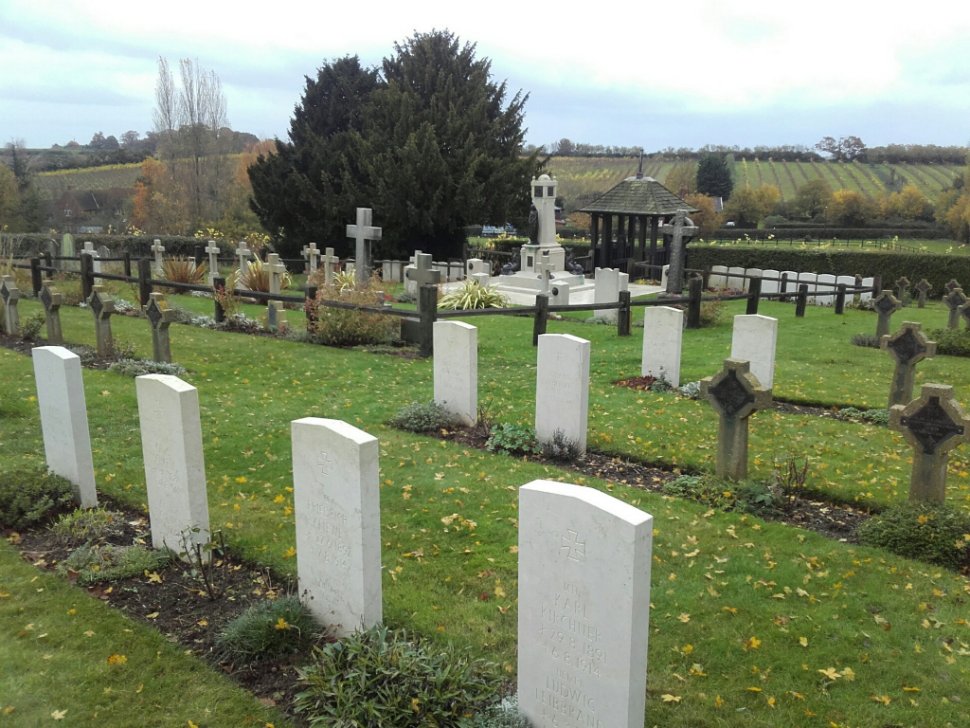
St Mary's Church Commonwealth War Graves
|
Near the village of Shotley stands St Mary's Church. Its churchyard is one of the most haunting in East Anglia, filled with the graves of mostly teenage lads sent out by HMS Ganges to die in accidents and wars. Some of their bodies were brought back for burial, but most often these are mere memorials to young boys lost deep beneath fathoms of filthy, icy water. The churchyard is also home to a large naval cemetery cared for by the Commonwealth War Graves Commission. It has graves from both World Wars, with 99 Commonwealth burials of the 1939-45 war, including 3 unidentified sailors of the Royal Navy and 1 unidentified seaman of the Merchant Navy. There are also Dutch Navy and German burials here.
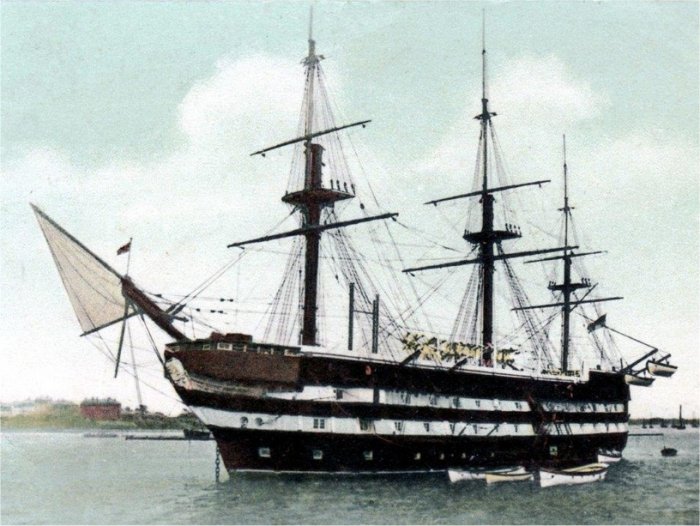
HMS Ganges
|
Of note at the marina is the HMS Ganges Museum, which tells the story of HMS Ganges with many exhibits, photographs and artefacts on display. The Royal Navy Training Establishment at Shotley opened in 1905 and over 150,000 Naval cadets were trained up until it closed in 1976.
The increasing professionalism of the Royal Navy and the reform of practices during the mid-nineteenth century led to the need to establish new training centres at which recruits could be inducted into navy life. The Admiralty decided to set aside five old laid up hulks in different ports around the country, and use them as bases at which volunteers aged between 15 and 17 could spend a year being educated for future service in the navy. The plan called for an annual intake of 3,500 boys. They were to be trained in seamanship and gunnery, as well as traditional aspects of sea life. One of the hulks chosen to be converted into a school was the old 84-gun second-rate ship of the line HMS Ganges. Despite initial objections that her layout made her unsuitable for the task, the decision went ahead.
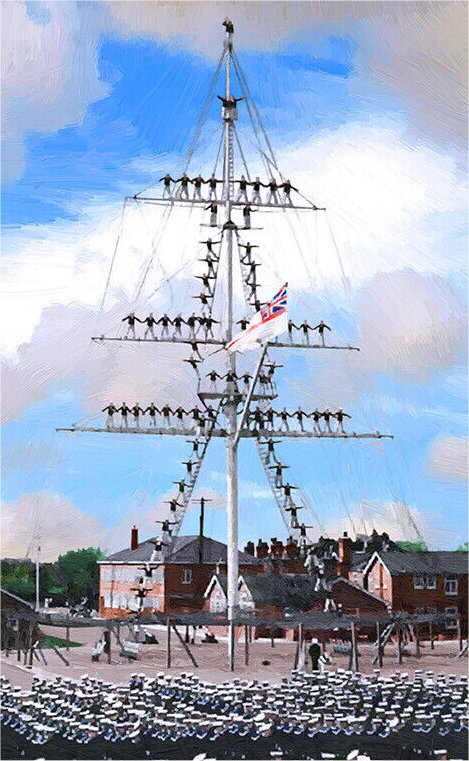
Climbing the Mast
|
HMS Ganges was a training ship of the Royal Navy. She was established as a boys' training establishment in 1865, and was based aboard a number of hulks before moving ashore. She was based alternately in Falmouth, Harwich (from 1899) and Shotley (from 1905), where she remained in service until October 1976.
As an aside, when I started courting (there's an old-fashioned word) my wife to be, Rosie, the first time I went to visit her parents in Wembley, she took me to visit Mr Woods. When Rosie was at secondary school, pupils in their later years at the school were each allocated an elderly member of the local society to take under their wing. Rosie became Mr Wood's friend. He was a friendly character with a tale to tell. He had grown up at Distington in West Cumbria, only a couple of miles from where I grew up. As a lad he was trained at HMS Ganges, and subsequently served in the Royal Navy during World War II. His claim to fame was he had received a medal from Russia for his services during the war. Sadly, my memory fails me regarding the details for that award, though I am aware that many sailors received Russian medals as recognition of their courage exhibited on the convoys that supplied Russia.
Redevelopment of the former HMS Ganges was first proposed in 2000, with a series of retirement homes planned for the site. The site remains undeveloped and its future is uncertain. The site has had planning permission granted in principle.
Occasionally, when I am land based, I will head down to Shotley where a few pleasant walks can be had. The obvious walk to try is The Arthur Ransome Walking Trail which can be followed from Shotley Pier to Pin Mill, along the bank of the River Orwell. The Two Rivers Walk takes in St Mary's Church mentioned earlier. But if you like to stretch your legs, opt for The Farms & Rivers Walk, a pleasant 7.5-mile stroll which takes in Erwarton Church en route.
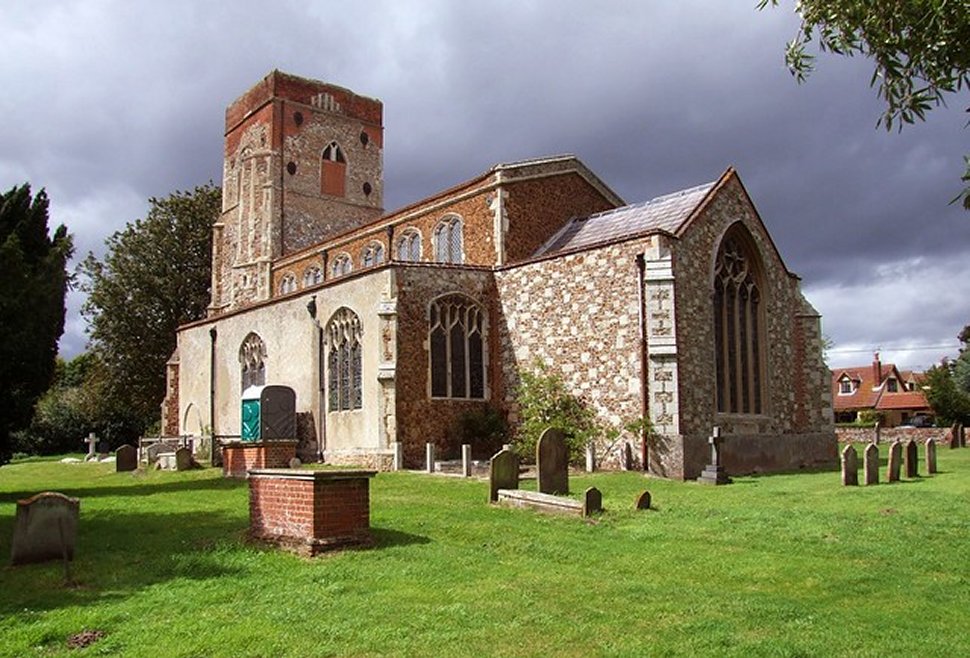
Erwarten Church
|
Behind Erwarton's gothic gatehouse lies a Tudor Hall forever linked to the most famous of King Henry VIII's wives: Anne Boleyn - she loved it so much, legend has it, that when she died, she asked that her heart be buried there. The second wife of the King and the mother of future queen Elizabeth I, the two main players in the English Reformation, Anne was a regular visitor to Erwarton Hall where her aunt Amy and uncle Philip lived.
It's believed that Henry visited Anne at the Hall when they were courting and deeply in love: just three years after the couple married, Queen Anne Boleyn was executed by beheading within the confines of the Tower of London after being found guilty of high treason.
Her body was taken by her distressed ladies in waiting and carried to the nearby Chapel of St Peter ad Vincula. Placed in an old elm chest which had once contained bow staves from the Tower, her head and body were reunited and she was buried in the chancel close to the remains of her brother, Lord Rochford. And that was the end of Anne Boleyn. Or was it?
During Victorian-era renovations in 1837, a heart-shaped tin casket was discovered in the chancel wall of St Mary's Church at Erwarton, filled with dust. It was reburied beneath the organ with a small plaque marking the spot which made the claim that the former queen's heart had been brought to the church by her uncle, Sir Philip Parker following her execution on May 19 1536. Whether the heart was indeed buried at the church or not, the Philip in question is incorrect - Sir Philip Parker was a later owner of Erwarton Hall, Anne's uncle was Sir Philip Calthorpe, who had married her aunt Amy.
Enough pondering, after a couple of beers we hiked back to
Duonita, where I rustled up a meal out of tins, which must have been well past their expiry date, but it went down well.








